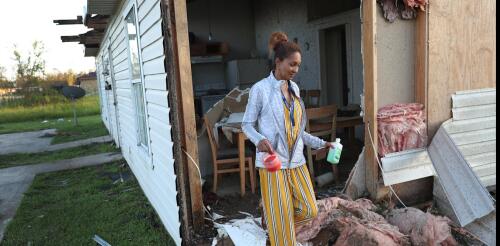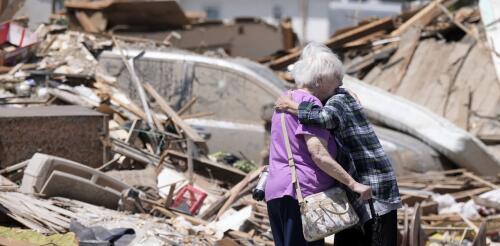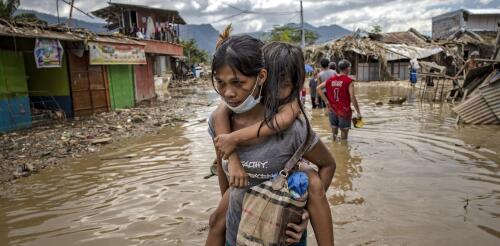Disaster recovery
Most Americans will remember 2020 as the year when the pandemic changed everything. But for Lake Charles, Louisiana, and its neighbors along the Gulf Coast, it was also the year of record-setting disasters, when “once-in-a-lifetime” storms hit in such rapid succession that their impacts blurred together. A recent National Academies consensus study I worked on looked into the compounding disasters that the region faced – both physical and socioeconomic – as storm after storm arrived during the pandemic with little time for recovery. It concludes that Lake Charles’ experiences could be a harbinger of what’s to come in a warming world unless the nation fundamentally rethinks its disaster preparedness, response and recovery strategies. Lake Charles’ compounding disasters Hurricane Laura made landfall near Lake Charles on Aug. 27, 2020, as a powerful Category 4 storm, with wind speeds exceeding those that local building codes were designed...
People often think of disasters as great equalizers. After all, a tornado, wildfire or hurricane doesn’t discriminate against those in its path. But the consequences for those affected are not “one-size-fits-all.” That’s evident in recent storms, including the widespread storms that brought deadly tornadoes and downpours to several states over the 2024 Memorial Day weekend, and in the U.S. Census Bureau’s national household surveys showing who was displaced by disasters in 2023. Overall, the Census Bureau estimates that nearly 2.5 million Americans had to leave their homes because of disasters in 2023, whether for a short period or much longer. However, a closer look at demographics in the survey reveals much more about disaster risk in America and who is vulnerable. It suggests, as researchers have also found, that people with the fewest resources, as well as those who have disabilities or have been marginalized, were more likely to be displaced f...
Shortly after the opening ceremony of the 2023 United Nations climate negotiations in Dubai, delegates of nations around the world rose in a standing ovation to celebrate a long-awaited agreement to launch a loss and damage fund to help vulnerable countries recover from climate-related disasters. But the applause might not yet be warranted. The deal itself leaves much undecided and has been met with criticism by climate justice advocates and front-line communities. I teach global environmental politics and climate justice and have been attending and observing these negotiations for over a decade to follow the demands for just climate solutions, including loss and damage compensation for countries that have done the least to cause climate change. COP28 President Sultan Ahmed al-Jaber, center, walks with world leaders and representatives of countries to the climate summit’s opening ceremony. The loss and damage fund was one of the fi...
An estimated 3,000 pets were still missing more than a week after deadly wildfires ripped through Maui in August 2023 and left thousands of people – many of whom had companion animals – homeless. The Conversation asked Sarah DeYoung, who has conducted research in Hawaii and studies what happens to pets after disasters, to explain why rescuing companion animals is a high priority following wildfires and how donors can help animals and pet owners recover from this disaster. What happens to pets after a catastrophic fire? When disasters strike, people often evacuate with their pets, as long as it’s possible for them to quickly grab their dogs, cats or other kinds of companion animals. However, you may not have time to gather your animals during a quick-onset event like a wildfire, or your animals might be hiding. This is especially true for cats, because they can be skittish. There are other complications, such as evacuation by boat – which makes it harder...
Major wildfires on the Hawaiian island of Maui have killed dozens of people and caused heavy damage, particularly in the historic town of Lahaina, as of Aug. 10, 2023. The state has asked all visitors to leave Maui and those planning to travel there to reschedule their trips – a harsh blow to a destination whose economy relies heavily on tourism. University of South Carolina research professor Rich Harrill, an expert on hospitality and tourism, explains how such events affect places like Maui in the short and long terms. How tourism-dependent is Hawaii compared to other popular destinations? Compared to other destinations, Hawaii is very reliant on tourism – it comprises about 25% of the state’s economy. According to the Hawaii Department of Business, Economic Development & Tourism, visitor spending was projected to be US$20.8 billion in 2023 and $23.4 billion in 2026. Tourism plays an even greater role on Maui. Maui County has the state’s highest re...


